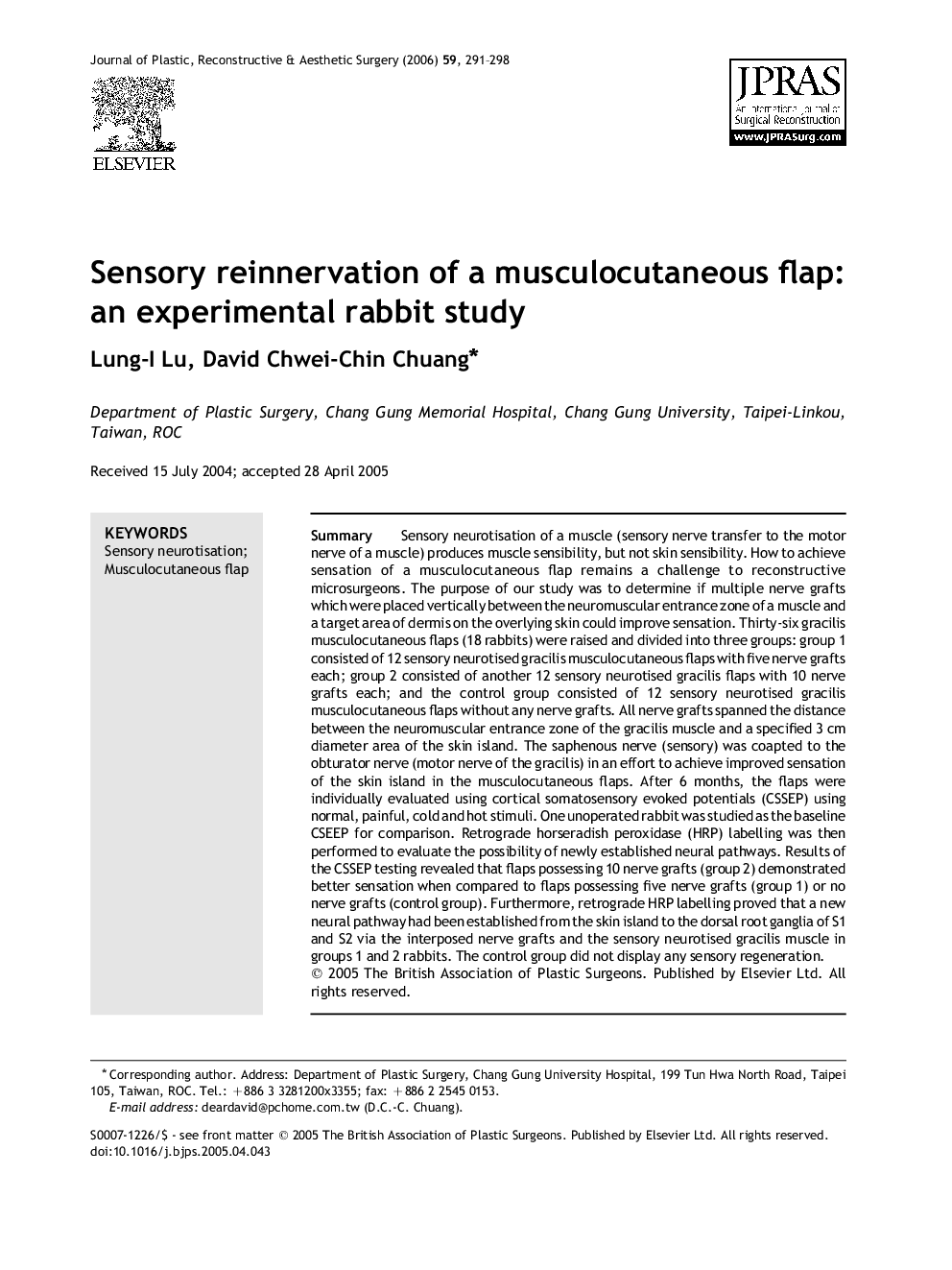| Article ID | Journal | Published Year | Pages | File Type |
|---|---|---|---|---|
| 4122084 | Journal of Plastic, Reconstructive & Aesthetic Surgery | 2006 | 8 Pages |
Abstract
Sensory neurotisation of a muscle (sensory nerve transfer to the motor nerve of a muscle) produces muscle sensibility, but not skin sensibility. How to achieve sensation of a musculocutaneous flap remains a challenge to reconstructive microsurgeons. The purpose of our study was to determine if multiple nerve grafts which were placed vertically between the neuromuscular entrance zone of a muscle and a target area of dermis on the overlying skin could improve sensation. Thirty-six gracilis musculocutaneous flaps (18 rabbits) were raised and divided into three groups: group 1 consisted of 12 sensory neurotised gracilis musculocutaneous flaps with five nerve grafts each; group 2 consisted of another 12 sensory neurotised gracilis flaps with 10 nerve grafts each; and the control group consisted of 12 sensory neurotised gracilis musculocutaneous flaps without any nerve grafts. All nerve grafts spanned the distance between the neuromuscular entrance zone of the gracilis muscle and a specified 3Â cm diameter area of the skin island. The saphenous nerve (sensory) was coapted to the obturator nerve (motor nerve of the gracilis) in an effort to achieve improved sensation of the skin island in the musculocutaneous flaps. After 6 months, the flaps were individually evaluated using cortical somatosensory evoked potentials (CSSEP) using normal, painful, cold and hot stimuli. One unoperated rabbit was studied as the baseline CSEEP for comparison. Retrograde horseradish peroxidase (HRP) labelling was then performed to evaluate the possibility of newly established neural pathways. Results of the CSSEP testing revealed that flaps possessing 10 nerve grafts (group 2) demonstrated better sensation when compared to flaps possessing five nerve grafts (group 1) or no nerve grafts (control group). Furthermore, retrograde HRP labelling proved that a new neural pathway had been established from the skin island to the dorsal root ganglia of S1 and S2 via the interposed nerve grafts and the sensory neurotised gracilis muscle in groups 1 and 2 rabbits. The control group did not display any sensory regeneration.
Keywords
Related Topics
Health Sciences
Medicine and Dentistry
Otorhinolaryngology and Facial Plastic Surgery
Authors
Lung-I Lu, David Chwei-Chin Chuang,
